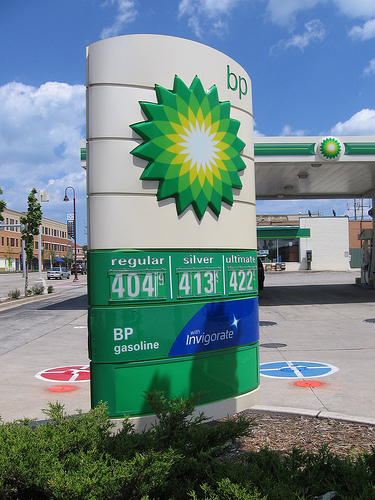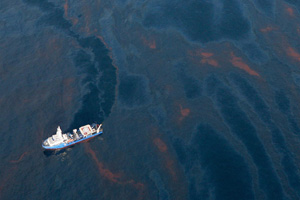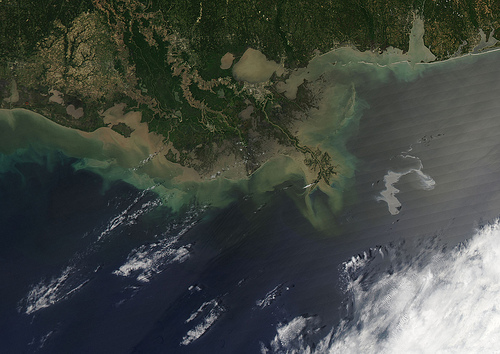
Photo by mechanikat, <a href="http://www.flickr.com/photos/mechanikat/2540128864/">via Flickr</a>.
Over at Foreign Policy, I write about what the Gulf of Mexico spill means for BP’s decade-old greenwashing campaign:
A decade ago, the company then known as British Petroleum launched a multimillion dollar advertising campaign to rebrand itself as the greenest of oil giants. Since then, it has gone only by the initials “BP” and has popularized a new slogan: “Beyond Petroleum.” The campaign launched with a $200 million public relations and advertising budget and a new logo featuring the now-ubiquitous green-and-yellow sunburst. Ten years later, the company still spends big on advertising, dropping $76 million on radio and TV ads touting its image in the United States just last year.
The campaign has paid off for the company. A customer survey in 2007 found that BP had by far the most environmentally friendly image of any major oil company. That year, the “Beyond Petroleum” campaign also won the Gold Award from the American Marketing Association. The company reported that between 2000 and 2007, its brand awareness jumped from 4 percent to 67 percent and sales rose steadily.
But those hundreds of millions of dollars worth of green branding can’t fortify the company against the environmental and public relations catastrophe unfolding in the Gulf of Mexico. At least 210,000 gallons of crude are hemorrhaging into the Gulf each day after the April 20 explosion and subsequent collapse of BP’s Deepwater Horizon rig 50 miles off the Louisiana coast, a blast that killed 11 workers and injured 17 others. In a worst-case scenario for the spill, it could gush up to 6 million gallons per day. The spill is already well on its way to eclipsing the 1989 Exxon Valdez disaster, which dumped 10.8 million gallons into Alaska’s Prince William Sound and stands as the worst environmental disaster in U.S. history.










